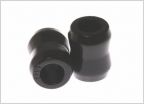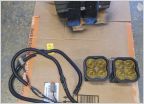-
Welcome to 4Runners.com!
You are currently viewing as a guest! To get full-access, you need to register for a FREE account.
As a registered member, you’ll be able to:- Participate in all 4Runner discussion topics
- Transfer over your build thread from a different forum to this one
- Communicate privately with other 4Runner owners from around the world
- Post your own photos in our Members Gallery
- Access all special features of the site
Monitor Trans Temps: Torque Pro App (Android) & OBD Jumper Method
Discussion in '4th Gen 4Runners (2003-2009)' started by 4-Funner, Mar 25, 2022.


 Lift kit help?
Lift kit help? Front end noise help!
Front end noise help! Ticking sound after valve replacement
Ticking sound after valve replacement Quad fog lights in OEM bumper
Quad fog lights in OEM bumper Worth keeping my 05 4runner?
Worth keeping my 05 4runner? Torque Specs
Torque Specs










































































